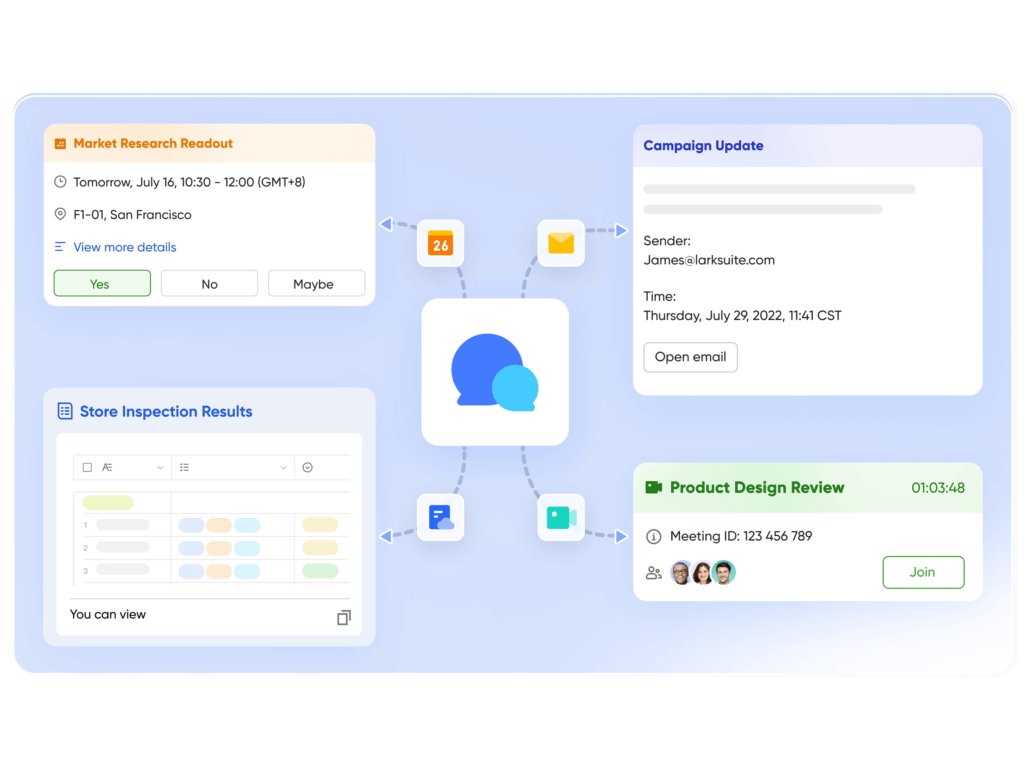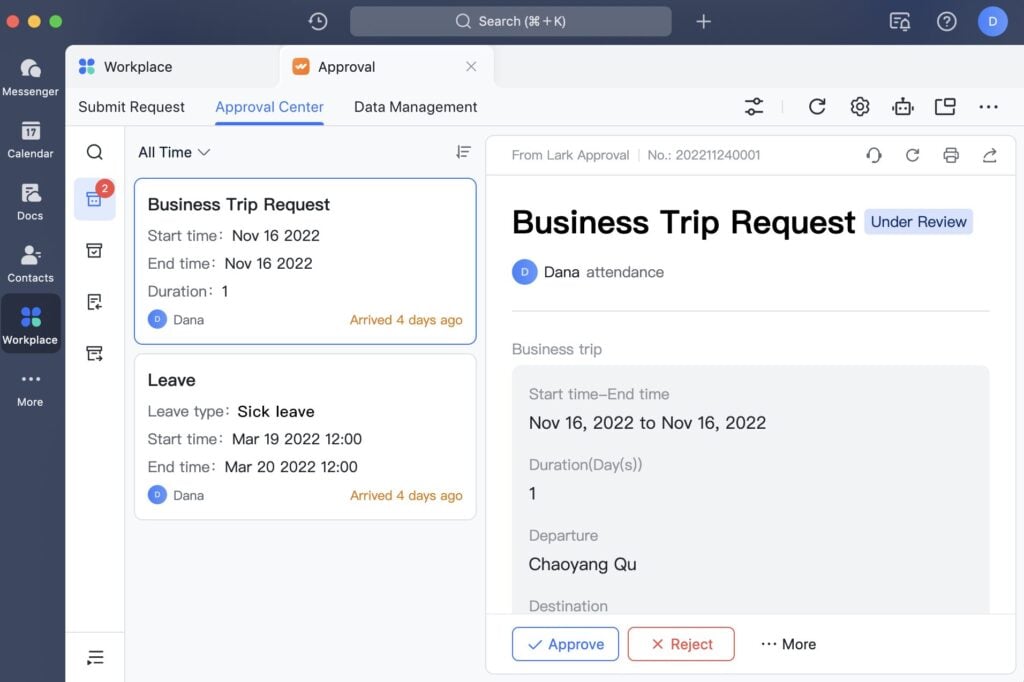The Hidden Multiplier Effect of Running Workflows in Lark
Every team knows the feeling: you start your day with a manageable list of tasks, only to realize by lunchtime that your energy has been consumed by chasing updates, digging through email threads, or waiting for someone’s approval. It’s not that you don’t already have access to the best project management tools. If anything, the problem is having too many of them. One app for messaging, another for meetings, yet another for files — and none of them really work together the way you want.
That fragmentation is costly. It doesn’t just waste a few minutes here and there. It quietly compounds into lost hours, missed deadlines, and frustrated teammates who feel like they’re always behind.
Lark takes a different approach. Instead of asking people to juggle a stack of disconnected apps, it brings communication, tasks, approvals, and data into one shared environment. The result is a kind of hidden multiplier effect: minor” workflow improvements that, when added together, unlock outsized gains in team productivity. Let’s break down how this shift plays out in the everyday life of a team.
Table of Contents
Lark Messenger: From conversation to action in seconds
Think about the number of times a project stalls because someone forgets to turn a chat message into an actual task. It’s a tiny gap, but one that creates a lot of rework. Lark Messenger helps you close that gap instantly.
You can pin the most important updates so they never get buried. You can search conversations across projects in seconds. And the best part? You can turn a single message into a task or save the forwarded messages from your colleague and turn them into a complete doc with one click.
That means conversations don’t just stay conversations — they feed directly into the workflow. Instead of copy-pasting details across apps, teams can keep momentum moving in real time.

Lark Calendar: No more back-and-forth scheduling
Scheduling meetings is one of those hidden productivity drains. A five-minute chat about “what time works for you?” often spirals into a dozen emails. Multiply that across a global team and you’ve lost entire days to logistics.
Lark Calendar solves this elegantly. Real-time availability shows you when teammates are free. One-click invites from Messenger reduce friction. And instantly generate a group of all the people you need to invite without adding them one after one.
The effect isn’t just fewer scheduling headaches. It’s confidence that your meetings will start with everyone aligned, with the right files and context already in place.

Lark Approval: Decisions at the speed of work
Approvals are another silent productivity killer. Expense claims, leave requests, or campaign sign-offs often disappear into inboxes. Before you know it, a project is stalled because one decision is waiting for attention.
With Lark Approval, requests can be submitted in seconds. Managers get real-time notifications and can approve directly from their phone. Every decision is logged automatically, so there’s full visibility without extra work.
Here’s where the hidden multiplier comes in: when decisions flow quickly, projects don’t bottleneck. And when projects don’t bottleneck, teams build trust in the system. That trust frees up energy for real problem-solving instead of process wrangling.
It’s also where you see the benefit of an automated workflow. With Lark, approvals don’t sit in limbo — they move seamlessly, creating a rhythm where work keeps pace with business needs.

Lark Base: Turning messy spreadsheets into living workflows
Spreadsheets have long been the default for tracking projects, but let’s be honest: they don’t scale well. The more rows you add, the harder it gets to manage multiple versions, manual updates, and different formatting styles.
Lark Base is built to solve exactly that problem. You can switch between table, Kanban, or calendar views depending on what your team needs. Automations handle repetitive updates like changing task statuses. And because everyone works off the same source of truth, there’s no confusion about which version is “the latest.”
For growing teams, this shift is enormous. Instead of patching together project tracking with endless spreadsheets, you get a structured system that adapts as your work expands.

Lark Docs + Wiki: Knowledge that stays connected
One of the most overlooked productivity killers is lost knowledge. A playbook buried in a folder. Meeting notes saved on someone’s desktop. Guidelines were sent as an attachment three months ago. Every time knowledge is scattered, teams waste energy rediscovering it.
Lark prevents this in two ways. Docs make drafting, co-editing, and live collaboration smooth. Wiki acts as the long-term memory of the organization — a home for finalized resources like policies, onboarding guides, or brand playbooks.
The key is that both Docs and Wiki stay connected to Messenger, Calendar, and Base. Knowledge isn’t siloed off; it’s woven into the actual workflows where it’s needed. That connection means fewer “where’s that file?” moments and more “let’s build on this idea” moments.
Conclusion
Most teams don’t realize how much of their energy is lost in minor delays — a misplaced file, a late approval, a meeting without follow-up. But these aren’t just annoyances. They’re friction points that quietly erode productivity.
Lark eliminates that drag by pulling communication, data, and decision-making into one connected environment. Instead of bouncing between apps, your team works in a single flow where actions move forward naturally.
At its core, Lark isn’t just another productivity suite. It’s the business process management software that transforms scattered workflows into structured momentum. The result? Projects move faster, teams stay aligned, and leaders gain confidence that progress is happening without constant micromanagement.
That’s the multiplier effect in action — not louder, not flashier, just quietly compounding gains that free your team to focus on what matters most.